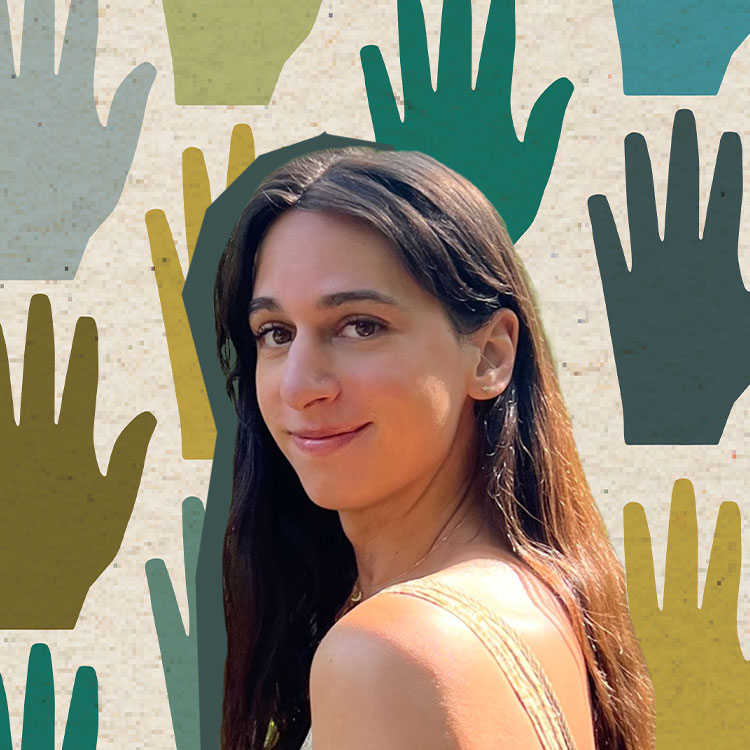As the co-founder and editor in chief of Atmos, a biannual magazine and digital platform dedicated to ecological and social justice, Willow Defebaugh holds a vision that goes beyond the surface of the Earth and finds its way back to our hearts. From the quiet, calm waterways of Sam Man Tsai, a fishing village on the outskirts of Hong Kong, to the exuberant rhythm that pulses through Calabar, home of Nigeria’s biggest carnival, Atmos spotlights the identity, culture, and art that breathe life into communities while also addressing the pressing issues of environmental justice and climate change.
In her debut book, The Overview: Meditations on Nature for a World in Transition, Willow explores themes of reverence, balance, evolution, and healing through an anthology of meditative essays accompanied by immersive photography, shedding light on the eternal beauty of nature and the lessons we learn from it. Adapted from her weekly newsletter of the same name that shares insights from deep ecology, The Overview also weaves together Willow’s gender transition story and how she sought guidance from nature throughout her journey.

Our orientation is always toward telling stories of heart. In the end, that’s what we’re trying to change: hearts, not minds.
You’ve talked about each issue of Atmos starting from a place of reverence. What does reverence mean to you?
Reverence is the root word for so much of our work at Atmos. To me, first and foremost, it’s about cultivating and restoring a lost sense of respect for this planet and all of the remarkable beings we share it with. But beyond mere admiration, it has a spiritual undertone to me. Reverence is about beholding this world with a sense of awe and wonder, seeing it all as sacred and greater than ourselves — something we are invited to remember that we are part of. That’s the foundation of deep ecology, a philosophy I draw from in my writing that holds humans as but one strand in the web of life, no more or less significant than any other.
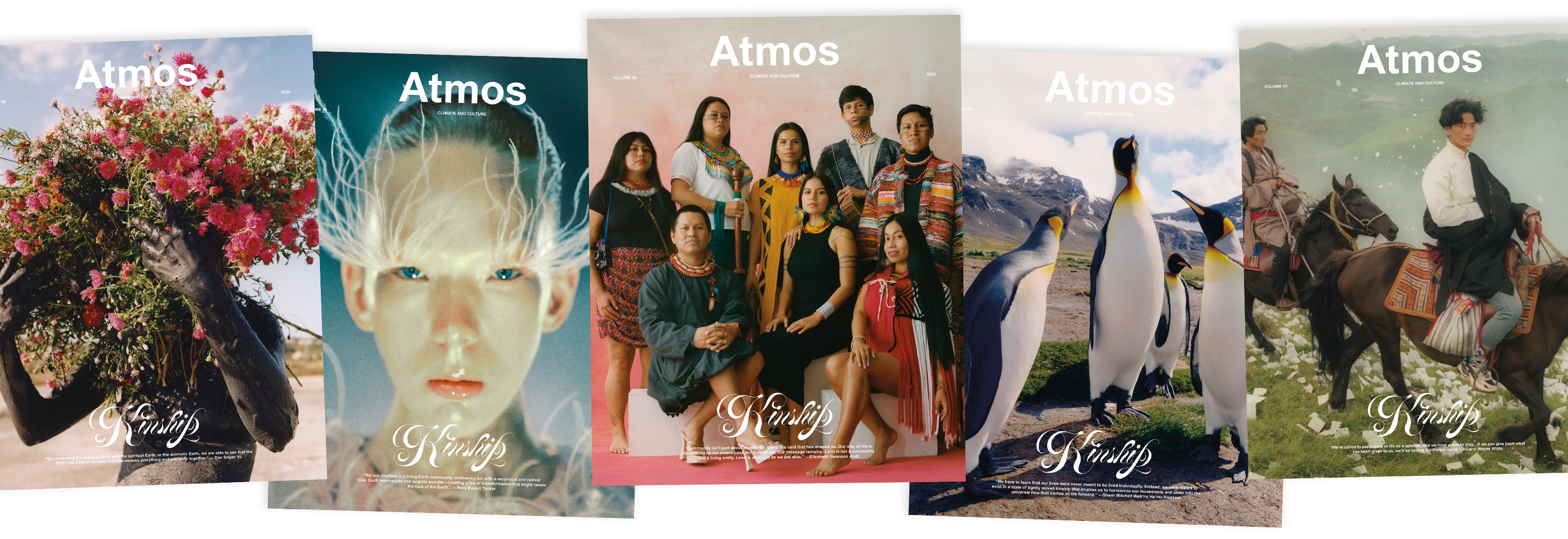
What is your favorite and least favorite part of the writing process?
I think of writing like weaving. It always starts with identifying the larger pattern I’d like to loom: the theme and thesis of what I’m trying to say. My favorite part is finding the different strands I want to thread together in order to draw the reader to that conclusion where it all ties together. My least favorite part is trying to figure out when it’s finished; the temptation to continuously edit can leave you tangled in knots. But with practice you learn to trust the weft and weave, that intuitive feeling in your gut that tells you when a story is finished. I also don’t believe in telling perfect stories, only authentic ones.
How do you see storytelling as a tool for fostering connection and inspiring activism among your readers?
[The American novelist] Richard Powers once wrote: “The best arguments in the world won’t change a person’s mind. The only thing that can do that is a good story.” Storytelling is inherent to what makes us human. Most of us aren’t moved by statistics and data — yet those are the mediums through which the climate crisis has often been communicated. At Atmos, we endeavor to engage readers with this issue on an emotional level, because that is the level at which I believe true change occurs. So our orientation is always toward telling stories of heart. In the end, that’s what we’re trying to change: hearts, not minds.
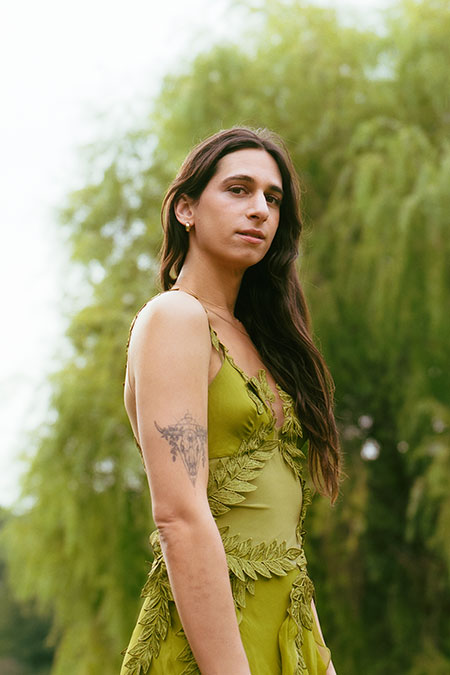
Willow enjoying her favorite local park in Brooklyn, New York, where she spends her Sundays dropping off her compost, shopping at the farmers market, and reading among the trees; photography courtesy of Justin J. Wee.
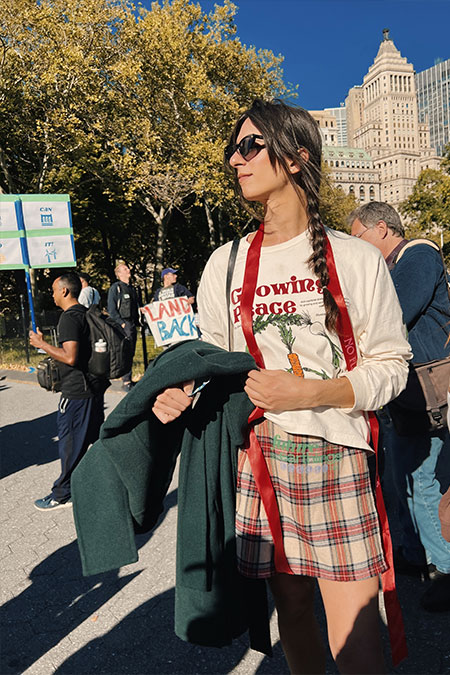
Willow attending the climate march in New York City on Earth Day in 2022; photography courtesy of Willow Defebaugh.
You’ve talked before about the pressure people feel to be a perfect environmentalist in order to care about climate. How can people overcome perfectionism to make a meaningful impact on climate activism?
A long time ago, I read an insight from Brené Brown about the difference between guilt and shame: guilt being the belief that we have done something bad versus shame making us believe that we are bad. To me, it’s in that nuance where everyday people become alienated from environmentalism. We are holding immense amounts of shame right now about being human; it’s hard not to feel like our species is evil for what we’ve done to the earth. But our species isn’t evil; we are in this situation largely because of extractive systems, poor government leadership, and corporate greed.
The very idea of the carbon footprint was invented by the fossil fuel industry to make individuals feel too ashamed to mobilize. And that’s what shame does: It paralyzes us. Even our everyday acts of pollution are acts, not our identities. We can feel guilt over them — and let that lead to a change in behavior — but most importantly, we need to confront and release the shame we feel around being human. Because humans are capable of horrors, yes, but also healing. And that’s what we need to tap into right now.
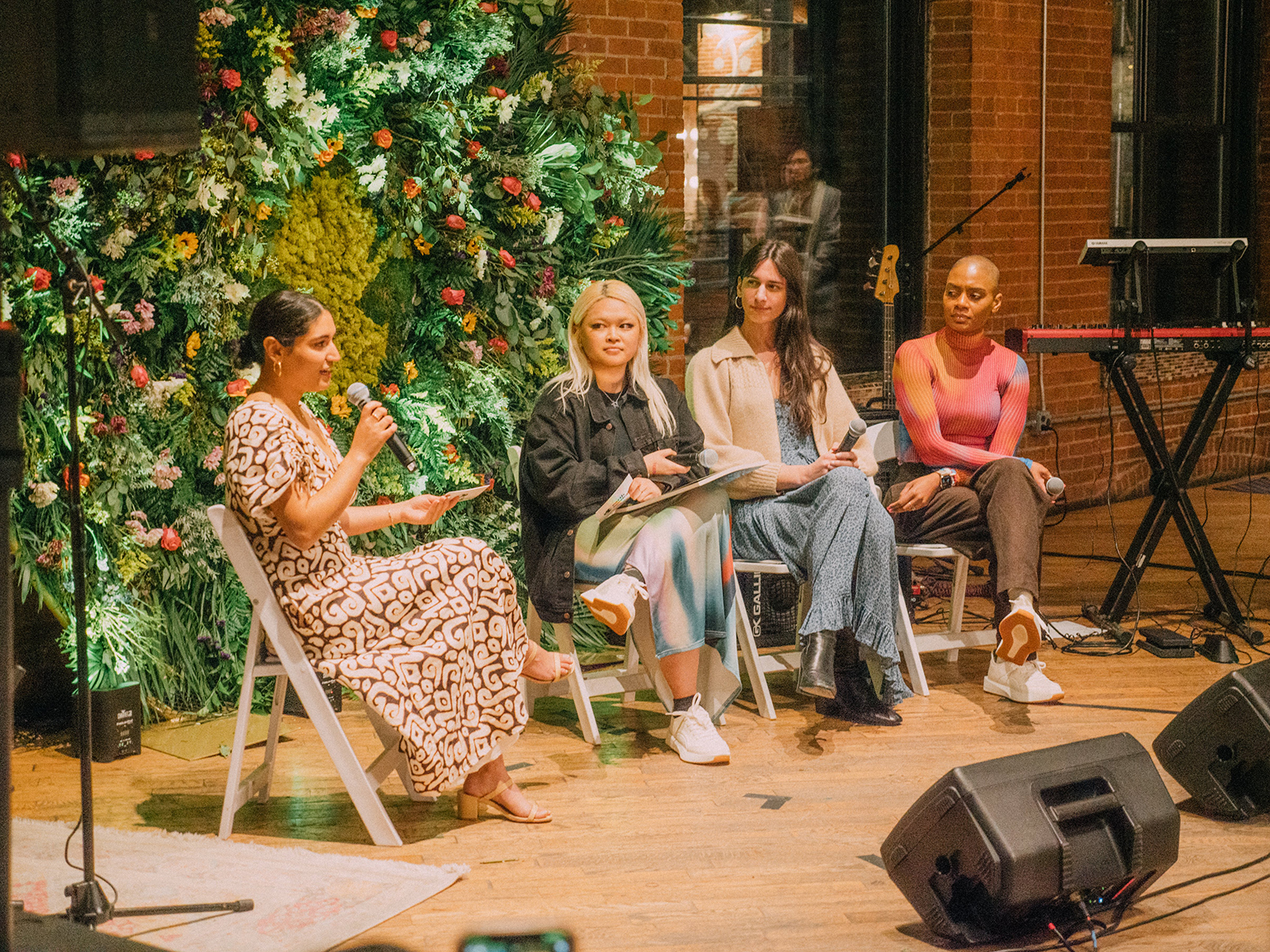
What are you excited about for the future of the climate?
People often assume that working in climate is depressing, and it can be. But it also familiarizes you with how many solutions already exist — not only drawing from technology but also those centering traditional ecological knowledge and Indigenous wisdom and land stewardship. Doing this work surrounds you with a community of others who are actively working to apply our ingenuity and creativity to this crisis. And that fills you with hope.
So I don’t know if it’s excitement per se, but I’m eager for everyone to educate and inform themselves about how many tools we already have to mend what has been ruptured. Because once you do, it becomes painstakingly clear that what we are actually up against is deliberate attempts to block them in order to maintain profit margins and the status quo. And we can let the ire and injustice of that mobilize us into political and collective action.
We need to confront and release the shame we feel around being human. Because humans are capable of horrors, yes, but also healing. And that’s what we need to tap into right now.
